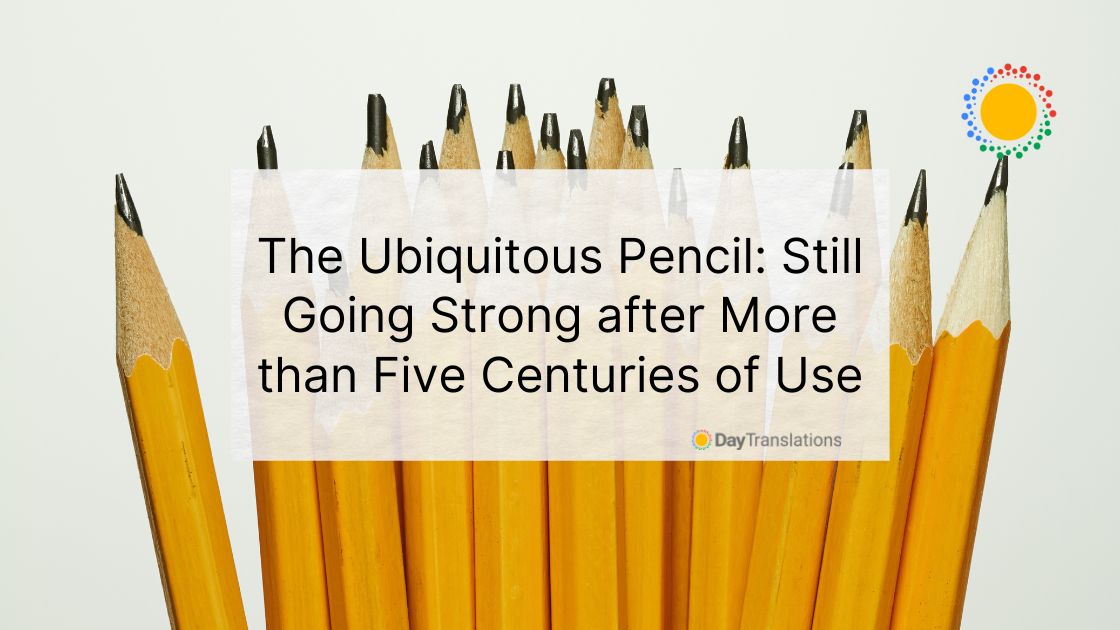Taking inspiration from the movie, “The Odd Life of Timothy Green,” let us take a look at the pencil, one of the world’s oldest writing instruments that may have been overtaken by other writing implements but never fully replaced.
The pencil had been in use since the 16th century, after the discovery of a major graphite deposit in Grey Knotts, a town in Cumbria, England. Thin brushes replaced the metal stylus used to scratch markings on papyrus, palm leaf and wax tablets. These thin brushes were called “pincel,” an Old French term for the small paintbrush, which came from the Latin term, “penicillus” or little tail, a fine brush with camel hair. With the discovery of graphite, which turned out to be a good writing tool for creating markings, including sheep, it eventually replaced the artist’s brush as the preferred writing instrument.
Almost everyone on earth has used a pencil. First-time school kids use pencils to write and draw. A pencil may have been a writing implement that is centuries old, but it is something that is not going out of style anytime soon, even if most of the younger generation are using a computer keyboard to write and draw.
Let’s take a look back in time and see how the pencil was born and why it will endure the much-clichéd phrase, “the test of time.” After all, 14 billion pencils are still produced each year.
Discovery of graphite
Early or mid-16th century, a large deposit of graphite was discovered at Grey Knotts in Cumbria, a region in England. Folks discovered too that it was a good writing tool to mark their sheep. The lode was solid and pure, making it easy to be cut in small stick-sized pieces. The graphite deposit remained the largest surface deposit of graphite in solid form to this day. As chemistry was not yet highly developed during the discovery of graphite, it was thought to belong to the family of lead minerals thus it was given the name “plumbago,” which in Latin stands for lead ore. Up to this day, the black core of a pencil is called lead. In other languages, the English equivalent of “lead pen” is “qalam raṣāṣ” in Arabic, “Peann Luaidhe” in Irish and “Bleistift” in German.
But it was soon discovered that graphite was a good liner for cannonball molds, which prompted the English crown to take control over its mines. They resorted to drastic measures just to protect it, flooding the mines when they have fulfilled their immediate requirements. Some people began to smuggle the graphite so that pencils could be produced. The material is soft therefore people using the graphite sticks started wrapping them with sheepskin and even strings to stabilize them. It became known as a good writing tool and artists from other countries began to seek the product. England realized that they found another mine and had a monopoly in pencil production for a long time, continuing to produce their trademark square pencils with natural graphite core until late in the 1800s. Keswick, the town where the original graphite deposit was found in the 16th century still continues to produce pencils until today.
Before the discovery of graphite, the pencils that were used consisted of a stick of lead equipped with a tip made of silver, which allowed the user to make light gray lines on paper and other surfaces.
Innovations
What is considered to be the first blueprint of the modern carpentry pencil encased in wood was created in 1560 by an Italian couple, Sinomio Bernacotti and his wife Lyndiana. Their design showed a compact type of pencil, with a flat and oval casing. It was an advanced design that comprised a hollowed out piece of juniper wood and the lead inserted in the center. It was later discovered that it would be easier to use two pieces of wood carved in the center. The graphite stick was then inserted in the groove before the two halves of wood are glued to each other. This is the method that is still being employed today in pencil manufacturing.
During the Napoleonic wars, France was isolated and had no access to pencils from Germany and England. But this did not stop them to think of alternatives. Nicholas Jacques Conté, a Napoleon’s army officer discovered in 1795 the method of mixing powdered graphite and clay, and that varying the ratio of the mixture changed the graphite’s hardness. The mixture was fired in a kiln to create a solid form of graphite. Even if he was not the first to discover this method, for the first person to discover it was an Austrian, Joseph Hardtmuth who worked at Koh-I-Noor, a world leader in fine stationery items for office, school and artists, this method of making pencils remained unchanged.
The English continued to use the whole sawn graphite for their pencils until Henry Bessemer invented in 1838 a way to compress graphite powder that was wasted during the sawing into solid graphite.
In the United States
Until the American Revolution, the American colonists imported pencils from Europe. Even Benjamin Franklin advertized the availability of pencils in 1729 in the Pennsylvania Gazette. It is generally believed that it was a cabinet maker from Concord, Massachusetts by the name of William Munroe who made the first wood pencils in 1812 in the United States. According to author and engineer Henry Petroski, Concord was also where Henry David Thoreau, American philosopher, poet and author created the process of making a good pencil made of lower quality graphite by binding it with clay in 1821. Thoreau’s father owned a pencil manufacturing plant in Concord that used graphite mined in New Hampshire.
It was said that Munroe’s technique was too slow, which benefited pencil mill owner Ebenezer Wood of Acton, Massachusetts. He was the first to use a circular saw for the production of pencils and he automated his production process, creating octagon- and hexagon-shaped pencil casings. Despite his invention, Mr. Wood was quite remiss because he was willing to share his techniques and failed to patent his invention. His generosity benefited New York’s Eberhard Faber, whose company became one of the world’s leaders in the production of pencils.
Mass production
The mass production of pencils was started likewise in Massachusetts by Joseph Dixon of the Tantiusques graphite mine. This company, the Joseph Dixon Crucible Company became the largest consumer and dealer of graphite in the world by 1870. The company name was later changed into the Dixon Ticonderoga, which specialized in art and pencil supplies. Americans used more than 240,000 pencils a day towards the end of the 19th century. The aromatic red cedar was the favored material used for the pencil casing because it does not break up into slivers when the pencil is sharpened. With the huge demand for pencils, the supply of red cedar dwindled drastically early in the 20th century that pencil manufacturers even recycled wood from barns and fences made of cedar, until a good alternative, incense cedar (juniper) that was perfumed and dyed was discovered. Attaching an eraser to the pencil’s end was an invention of Hymen Lipman in the year 1858.
Types
Pens distribute ink that stains the paper. On the other hand pencils create their marks through physical abrasion, with the solid core material attaching to paper or any other surface. One fine characteristic of graphite is that the mark it creates can be erased, but the mark, when left alone is quite durable. It is resistant to natural aging, ultraviolet radiation, and most chemical and even moisture.
In terms of grading for hardness, the letters B, F and H are used. B is for blackness, F is an arbitrary letter representing the gap between HB and H, while H stands for hardness. The standard graphite pencil used for writing has an HB grade. The range in between are represented by a number before the letter, so a 9H would be very hard, F and HB are medium hard/soft and 9B would be very soft.
Aside from the standard writing pencil, there are also charcoal pencils used by artists for sketching and drawing and colored pencils, also mostly used by artists and sketchers, but also used by editors and teachers when correcting text. There are also grease pencils that have softer cores which resemble waxy crayons that can be used to mark porcelain and glass surfaces. In the modern world there are makeup items that come in pencil form.
Advanced technology
The pencil is an old yet advanced product of technology. It predates the manual typewriter and the computer. Despite its age, it is a result of clever engineering, according to Henry Petroski. First, finding the right ratio to mix graphite and clay; finding the right type of wood that will not splinter during the sharpening process; the purification of graphite, its baking and curing process and extrusion to make the lead sticks and the creation of the wood shafts. Knowledge of chemicals and materials such as kilns, cotton, lacquer, printing ink, glue, waxes, cotton, rubber, paints solvents, resins, shellacs, dyes, clamps impregnation process and drying equipment are needed in the manufacture of pencils are next. It is not something whose parts you can buy at a crafts store and assemble on your own.
A pencil is…
A pencil made it easier for people to write, compared to using quills and liquid ink. It created a highly profitable industry. It benefitted many people across the globe. It is portable. It did not smear like liquid ink. It facilitated easier and faster communication. The humble pencil helped early authors, novelists, poets, news reporters and the like create books, novels, poems and news articles. It helped artists of yore create art masterpieces. It became a very handy writing tool for almost everyone.
It is still used by some writers to writer drafts of plays, stories and novels, by newscasters and news reporters, by engineers, carpenters, music composed, scientists, teachers, and people in business, students, golfers and parents.
Author John Steinbeck used more than 300 pencils to write his hit novel, “East of Eden” in 1952.
It has other uses too. It can be used as a stake for small plants. Incense cedar wood is bug resistant. It can serve as a dowel to plug holes on wood. Graphite is an effective dry lubricant and can keep your keys to slip easily into problematic locks. It can duplicate embossed patterns and its slightly abrasive eraser (contains pumice) is very handy if you want to remove grime such as sticker residue on glass windows and scuff marks on tiles. It can even bring back the shine on a doorknob made of brass. A pencil eraser is also a handy tool to clean the pins or contacts of your computer RAM. Just make sure you do not touch those gold/brass colored thingies with your bare hands or you will lose the RAM’s capacity. Pencils make great advertising¸ promotion, marketing conference and tradeshow giveaways as well.
One more thing, it is a great writing tool when solving crossword and Sudoku puzzles. With the 14 billion created annually, it is pretty certain that the pencil is not about to go out of style for a very long time.













Sorry, the comment form is closed at this time.